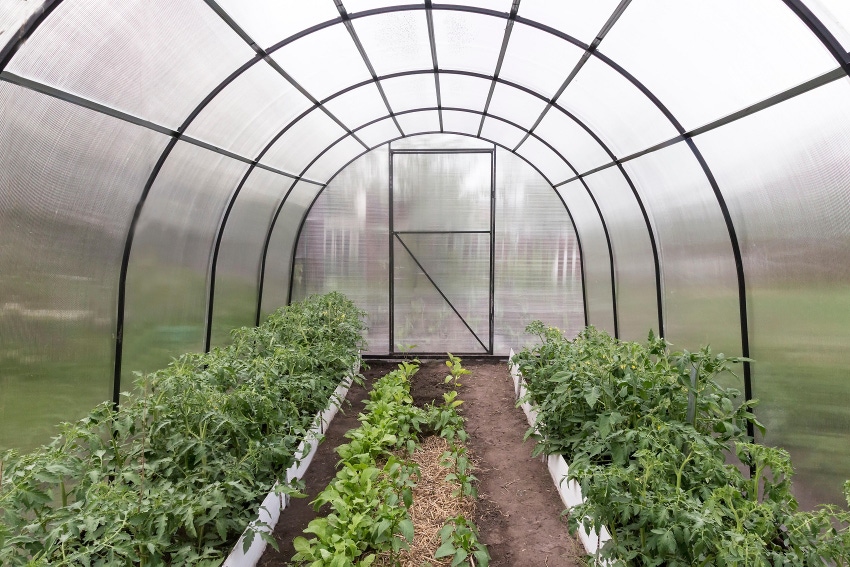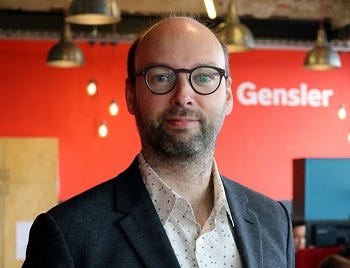Reusing Waste Heat from Data Centers to Make Things Grow
The energy cost of operating data centers is growing. And much of that energy ultimately becomes waste heat. Innovative operators are looking at ways that this heat can be used in agricultural production.

At a Glance
- It's estimated that data centers now account for 1% to 1.5% of global electricity use.
- A number of data center operators have established experimental greenhouses that make use of excess heat.
- The White Data Center on the island of Hokkaido in Japan is now using water warmed during the cooling process to farm eels.
As the modern world becomes increasingly reliant on the processing capabilities of data centers, concerns over how they are fueled have grown. The International Energy Agency estimates that data centers now account for 1% to 1.5% of global electricity use -- up to 340 terawatt-hours (TWh).
Most of the electricity that powers these facilities ultimately becomes heat energy. Most of that heat is wasted -- and may pollute the surrounding environment. Venting the excess heat can affect the climate in the immediate vicinity.
Some heat can be recycled: It can be used to generate further electricity for example. And the potential for its use in district heating -- providing heat to local residences -- has gained some attention, though the practicality of transporting that heat, whether it be heated water or heated air, over substantial distances is a challenge.
Maximum heat is typically around 32–43 degrees Celsius (90–110 degrees Fahrenheit) -- warm but not so hot that the temperature will be maintained during transport. Researchers are thus investigating solutions that use this heat on site. Indoor agriculture requires heat and the warm air generated by data centers can be channeled to facilities that grow all manner of organisms for consumption.
This is especially appealing in regions where outdoor agriculture is less feasible due to climatic factors. In Scandinavia, a significant proportion of produce must be imported because the growing season is limited. And the reuse of waste heat is increasingly mandatory. Germany’s Energy Efficiency Act, passed in September, requires the reuse of waste heat as much as it is possible. While the original requirements were diluted in the final version of the regulation, they portend an increasingly stringent set of regulations.
It may be practical to grow everything from algae to vegetables to seafood using data center waste heat. A number of experimental facilities have been established as proof of concept. Whether these projects will be scalable remains to be determined but the early results are promising.
Here, InformationWeek investigates how these projects have played out, with insights from Marcus Sandberg, an associate professor of construction management and building technology at the Luleå University of Technology; Petter Terenius, a lecturer in the department of information technology at Uppsala University; Joost Lansbergen, critical facilities leader for Gensler, a global architecture, design, and planning firm; and Matt Redding, co-leader for sustainability for Gensler's European region.
Heating Greenhouses
A number of data center operators have established experimental greenhouses that make use of excess heat.
Telecity Group established its Climate Change Arboretum, which aims to replicate the climatic conditions predicted for 2050, in Paris in 2010. It is warmed by waste heat from the company’s data center and aims to study how plants will react to climate change. The University of Notre Dame embarked on a similar initiative, using heat from a data center to heat a greenhouse in South Bend, Ind. Genesis, an energy company, has collaborated with the Luleå University of Technology and the Research Institutes of Sweden (RISE) as well as several local development agencies in Boden to create a greenhouse attached to one of its data centers there. And Containing Greens, a company based in Luleå, Sweden, grows microgreens hydroponically using data center waste heat.
Some have suggested that the technology employed in these experimental facilities might be scaled up to provide heat to vertical farming operations, which cultivate vegetable crops and other products in compact, indoor facilities in urban environments. These facilities themselves usually need substantial computer infrastructure in order to operate efficiently and so could potentially use the heat from their own servers to offset temperature control costs.
An experimental design in Sweden suggests that a 1-MW data center might be able to recover up to a third of its electricity costs by attaching a greenhouse to the facility. A 2,000-square-meter greenhouse could operate using excess heat from the data center alone while a 10,000-square-meter greenhouse could likely meet two-thirds of its heating demands using excess heat from the data center. In the latter case, that greenhouse would be able to meet nearly 8% of the demand for vegetables in northern Sweden.
Sweden has to import over 90% of its vegetables, so implementation there might offer unique benefits.

Marcus Sandberg, Luleå University of Technology
“In the north of Sweden, we don't have many greenhouses. The season is quite short for growing crops like tomatoes and cucumbers,” Sandberg says. “We are trying to increase self-sufficiency in food production because we import many fruits and vegetables from the south and also from abroad.”
Sweden’s greenhouses are heavily reliant on fossil fuels and greenhouses must be heated year-round due to the chilly climate. The results of this experimental scenario suggested that the data center and the greenhouse would need to be closely connected to ensure minimal heat loss and that crops might need to be rotated to ensure optimal production due to seasonal light availability.
Another study in Sweden found that using data center waste heat might be beneficial for crops that don’t require extreme heat, such as herbs and mushrooms. Mushrooms were identified as likely crops because of their low light requirements.
“Mushrooms do not need any light,” notes Sandberg, who was the lead author. “Eventually there was also some interest from greenhouse actors, but the problem then was that they were not situated in proximity to the waste heat.”
The study suggests that data center waste heat might be best used as a supplemental heat during off seasons rather than as a primary source of temperature control. Finding situations in which data centers and greenhouses can be placed near each other will likely be a challenge in larger scale implementation.
Further, Sandberg observes, the cost of connecting the facilities may be an obstacle. “Even if the greenhouse and the data centers were close in proximity, then there's still the expense of investing in new equipment. From the data center point of view, they didn't want to be disturbed.”
Growing Algae
Using waste heat from data centers to fuel algae growth might be a more parsimonious approach. Algae need very little to thrive -- heat, light, and a nutrient medium. Unlike more complex plant crops grown for food, they do not need soil. And pests are not as much of an issue, though undesirable organisms may need to be managed.
“When we investigated, we found that the growing temperature for algae is very similar to the temperature of heat that comes out of data centers, so it seemed like a natural fit,” Lansbergen and Redding recall in a joint response to questions posed by InformationWeek. “There is a circular beauty to it as well when you use energy to create organic carbon.”

Joost Lansbergen, Gensler
Algae can also subsist on waste effluents like sewage, making them useful candidates for creating sustainable industrial ecosystems. And they are also able to offer additional carbon capture capabilities if the cultivation facility is open to the environment.
Algae is grown for a variety of purposes, ranging from dietary supplements to fish feed to biofuels. The main expenses accrued result from processing to extract their useful components.
A study by Gensler found that a 100-cubic-meter pond attached to a hyperscale data center could potentially capture 14,000 kg of carbon through 17 harvests annually. Adding algae-growing panels to the outside of the center itself might be able to capture an additional 25,000 kg of carbon.
“The waste heat from a data center is typically not hot and it degrades significantly when you transport it. We estimated a 10-degree Celsius heat loss based on the heat leaving the building getting to a facility that was situated only a few hundred meters away,” Lansbergen and Redding claim. “Anything further away would mean that the heat would need to be amplified or increased to be usable for any purpose, whether that’s district heating or any other destination. As close as possible would therefore be best.”
Waste heat has been used to successfully cultivate algae in other scenarios. Heat from a cement plant was used to heat culture tanks and carbon dioxide emitted by the plant was used to facilitate algal growth. Similar projects have indicated that additional equipment would likely be needed to successfully transfer the heat, though.
Algae growing technology is not viable for all data centers. “It is dependent on what technology your data center uses,” Lansbergen and Redding say. “There are four types of data centers: air cooling, adiabatic cooling, economized mechanical cooling, and mechanical cooling. When we explored air cooled data centers as a heat source using a non-circulating water source, we found that we would need a river the size of the Thames when it enters London for just a single hyperscale data center. Clearly this is not feasible but when you review mechanical cooling with recirculating water, there are possibilities.”

Matthew Redding, Gensler
While this technology is not currently practical, Lansbergen and Redding are cautiously optimistic. “The largest obstacle to implementing this technology is getting buy in from both commercial sectors,” they confide. “Infrastructure would first need to be established on the data center side. As a practical concept, this is several years away from an at-scale prototype and then a further five years away from being implemented in a real-world application. Additionally, commercial growing companies would need to partner with data centers to agree to purchase that waste heat for growing use.”
Use in Aquaculture
Waste heat can also be used in aquaculture operations. Farmed fish and other seafood will constitute a $407 billion industry by 2030. The creation of efficiencies in this highly complex industry are thus potentially profitable.
In Norway, data center operator Green Mountain has collaborated with a lobster farming operation to provide waste heat, allowing them to cultivate lobsters in a novel land-based operation. The two companies plan to establish a lobster farm directly adjacent to a data center and use heated seawater to farm the highly desirable crustaceans.
Similarly, the White Data Center on the island of Hokkaido in Japan is now using water warmed during the cooling process to farm eels. The water exiting the cooling system is around 33 degrees Celsius (91.4 degrees Fahrenheit) -- a temperature conducive to raising these highly marketable fish.
Raising fish in aquaponic systems that combine fish farming with plant propagation might also be feasible. In these systems, water enriched by nitrogen from fish waste is used to fertilize crops. And the researchers involved with the Boden project have suggested that waste heat might also be used for raising insects for food products as well.
Desiccation of Agricultural Products
That which giveth can also taketh away. The heat wasted by data centers can nourish and facilitate growth. But once products are harvested, that heat can also remove moisture and prepare them for sale. A number of initiatives have investigated how the hot, dry air expelled by data centers might be channeled toward desiccating a range of crops, from coffee beans to waste wood for fuel.
EcoDataCenter in Falun, Sweden, for example, uses waste heat to dry waste wood products that can then be pelletized and burned for heat. This center also exclusively uses wind and hydropower to produce electricity. Waste heat might also be used to dry other biosolids that could be burned for fuel production or to warm anaerobic digestion reactors for the production of methane, which can also be burned for fuel.
Using waste heat to desiccate products has additional appeal in environments where ambient humidity makes drying difficult in the absence of heat from other sources -- especially wood burning, which is carbon-intensive. Researchers believe this may be an additional source of income for developing countries. Situating compact, container-sized data centers in these locations may facilitate technological development while also supporting the processing of agricultural commodities.

Petter Terenius, Uppsala_University
“I proposed container-sized data centers for the Costa Rican case, spread around the country, to serve the population with heat but also with increased access to ICT,” says Terenius, who has authored some of the pioneering research on this subject.
“I identified coffee beans as a good candidate, since coffee beans should not be dried at temperatures over 140 degrees Fahrenheit (60 degrees Celsius), to avoid scorching,” reports Terenius. “I then developed an index called ICRI (ICT availability/Consumer Readiness Index) to see which coffee-producing nation was the lowest hanging fruit as far as added ICT infrastructure is concerned. Costa Rica had the best ICRI, and Costa Rica also enjoys both a relatively stable political climate and rather healthy economic situation, so that is the country I focused on for the first experiment.”
In Costa Rica, the research has suggested that only around 50 small, container-sized data centers could potentially dry the country's entire coffee harvest. Cyberjaya, a developing town in Malaysia that now houses a high concentration of data centers might be able to use its excess heat to dry everything from seaweed, which the country is developing as an export, to fish.
“Many commodities can be dehydrated using data center waste heat: tea leaves, cardboard, seaweed, banana flakes,” Terenius adds. “Not to mention fodder in Australia -- a country with well over a thousand MW of data center waste heat, and many tonnes of fodder which I believe is currently dried using electricity. Moreover, in many African nations, 30% or so of all produce is either left on the field to rot or damaged during storage. Dried produce is much easier to store, and with long-term storage made possible, it makes more financial sense to pick all the produce in the fields in the first place.”
Additional research has shown that waste heat from other sources, such as power plants, can be used to dry commodities like chlorella, a microalgae used in biofuel production and as a nutritional supplement -- scenarios that may ultimately be useful in leveraging data center waste heat as well.
“The bottom line is that waste heat reuse is both the environmentally responsible thing to do and also profitable for the data center owner,” Terenius claims.
About the Author(s)
You May Also Like







